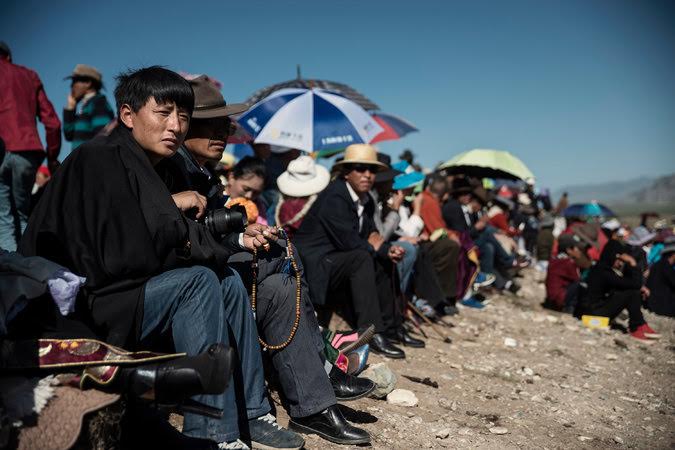
The Struggle to Preserve Tibetan Heritage
By Jonathan Ng
[divider]
[dropcap]F[/dropcap]ading in and out of focus, Tashi Wangchuk’s body blends into the darkness of his small room in Beijing, and his hunched frame seems to collapse into the monochrome background. The subject of a recent New York Times article and documentary in late November, Mr. Wangchuk encapsulates the struggle of Tibetans to preserve their culture against the encroaching presence of the Chinese government, who are slowly suffocating Tibetans’ voices. Facing increasing pressure to assimilate and lose their distinct identities, Tibetans must cultivate the very foundations of their civilization: their linguistic heritage.
Ruled by the People’s Republic of China since 1959, Tibet has gradually lost pieces of its culture through more than half a century of instability and displacement. Many people of the Tibet Autonomous Region have been forced to leave their homeland in recent decades and are now scattered as refugees throughout the world, residing in areas from as far as the United States to as close as the Dalai Lama’s current home in Dharamsala, India, which closely borders Tibet. In these makeshift homelands, the displaced people of Tibet salvage their culture through keeping up cultural practices through prayer, conversation, and reading. These members of the Tibetan diaspora struggle to preserve their heritage against foreign environments, where Tibetans often exchanged their traditional garbs for jeans and t-shirts.
However, while Tibetans around the world face the potent forces of assimilation and modernization, there are those who choose to live in their sacred home of their ancestors. These Tibetans still living in the Tibetan region of China often face a fate worse than those who live as refugees.
Since the Tibetan Uprising in 2008, tensions in the Tibet Autonomous Region have gradually intensified, as the Chinese government has taken steps to explicitly suppress Tibetan identity. In 2010, Chinese officials attempted to eliminate Tibetan as a language of instruction in primary and secondary school in Qinghai and Gansu provinces, areas which closely border Tibet that have been integral to innovation in Tibetan literature, film, poetry, and other forms of intellectual and cultural innovation since the 1980s. The Chinese efforts initially failed because of protests by students and teachers, although succeeded in overcoming resistance two years later. Additional restrictions have been implemented against Tibetan culture, with government and business affairs being conducted in Chinese. The eradication of Tibetan in education, administration, and economics causes significant rifts in an already cracked cultural infrastructure.
The location of Tibet within China.
The preservation of Tibetan traditions also faces other obstacles. There is a disincentive for Tibetans to learn Tibetan language since university entrance exams are in Mandarin Chinese. Furthermore, many children prefer to learn English as a second language of education due to its applicability throughout the world. Thus, Tibetans must balance the prospect of higher education and more profitable professions with the maintenance of their culture in modernizing China.
Many Tibetans turn to the Dalai Lama as a symbol who will help them restore their withering culture. However, even the Dalai Lama, who could very well be the last such leader chosen by his people, recognized that his role as a temporal leader to the Tibetans has run its course; because of his exile from his homeland, the Dalai Lama’s capacity to affect change is limited. His main focus is now on spiritual and cultural responsibilities.
In order to preserve their heritage, Tibetans must at the very least focus on the Tibetan language. Linguistic learning composes the very basic fibers of culture. If this linguistic thread is cut, how can the cultural tapestry be woven for future generations? In the documentary about Mr. Tashi Wangchuk, we are left with a bleak image if action is not taken soon: “My nieces want to become fluent in Tibetan but don’t know where to go. Our words will be lost to them.”
[hr]
Jonathan is a sophomore in Morse College. You can contact him at jonathan.ng@yale.edu
